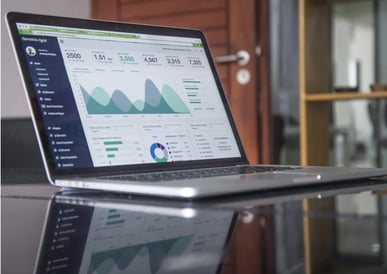One of the most expensive aspects of operating a drinking water production plant is energy, largely because of the pumps that abstract and transport the water. In some circumstances, they can account for as much as 50% of plant operating costs. Which is why it is so important to monitor pumping equipment performance very closely.
-
-
From abstraction to production, distribution and treatment, public water supply services are expensive to deliver. Not least because they have to operate 24/7. They also consume a great deal of energy; more than any other local authority cost center, in fact. And since the introduction of the French Law on Energy Transition for Green Growth, local authorities have been required to develop optimization strategies, the majority of which have their basis in efficiency. Which translates as consuming less energy to deliver the same public water supply service.
To achieve this goal, our experts have identified a number of areas that operators should consider. The first is supply network architecture, which should be designed to take advantage of gravity feed wherever possible, because pumping water accounts for 70% of drinking water production plant energy bills. Hence the importance of optimal pump sizing, although it is true to say that natural wear and tear and the changing flow and pressure requirements that inevitably occur in local authority areas may make the initial sizing calculation obsolete. To avoid this happening, our experts also advise maximizing the efficiency of all pumping installations.
A data-driven process

When it comes to maximizing efficiency, data is everything. The technologies available today enable accurate, reliable, robust and repeatable measurement of pump efficiency. Installing new types of sensor in pumps is the essential starting point for better decision-making. This type of in-situ diagnostic analysis for pump systems enables experts like those of Saur Group and its UK startup partner Riventa - which has more than 15 years’ experience in this field - to make recommendations for optimizing installation operation and reliability that are ranked by the ROI they offer. A golden opportunity for local authorities to make the right decisions.
Improving pump system efficiency can be as simple as rethinking the way pumps are used. That was all it took for one local authority in the Île-de-France region near Paris to cut its energy bill by 25%. In other scenarios, the recommendation may be to schedule pump maintenance or even replacement.
Combining the expertise of Saur and Riventa to ensure successful outcomes
These recommendations can also be accompanied by practical assistance to help the local authority choose which to adopt or reject on the basis of their financial impact and available budget, build an action plan or manage equipment maintenance and/or replacement. The work required to replace pumps, install variable speed controllers or upgrade pipework can be organized by Saur Group to enable the local authority to share its valuable expertise and benefit from its competitive rates.
Although controlling the cost of water production is the first direct benefit to be gained from the use of new water treatment technologies, the Riventa solution also allows local authorities to optimize the management of their assets, given that pumps are simultaneously expensive and critical items of equipment. It also helps to ensure continuity of service and can even reduce the carbon footprint of the authority. The bottom line is that this is a very effective way of cutting costs at the same time as boosting production efficiency.
Would you like to find out more?